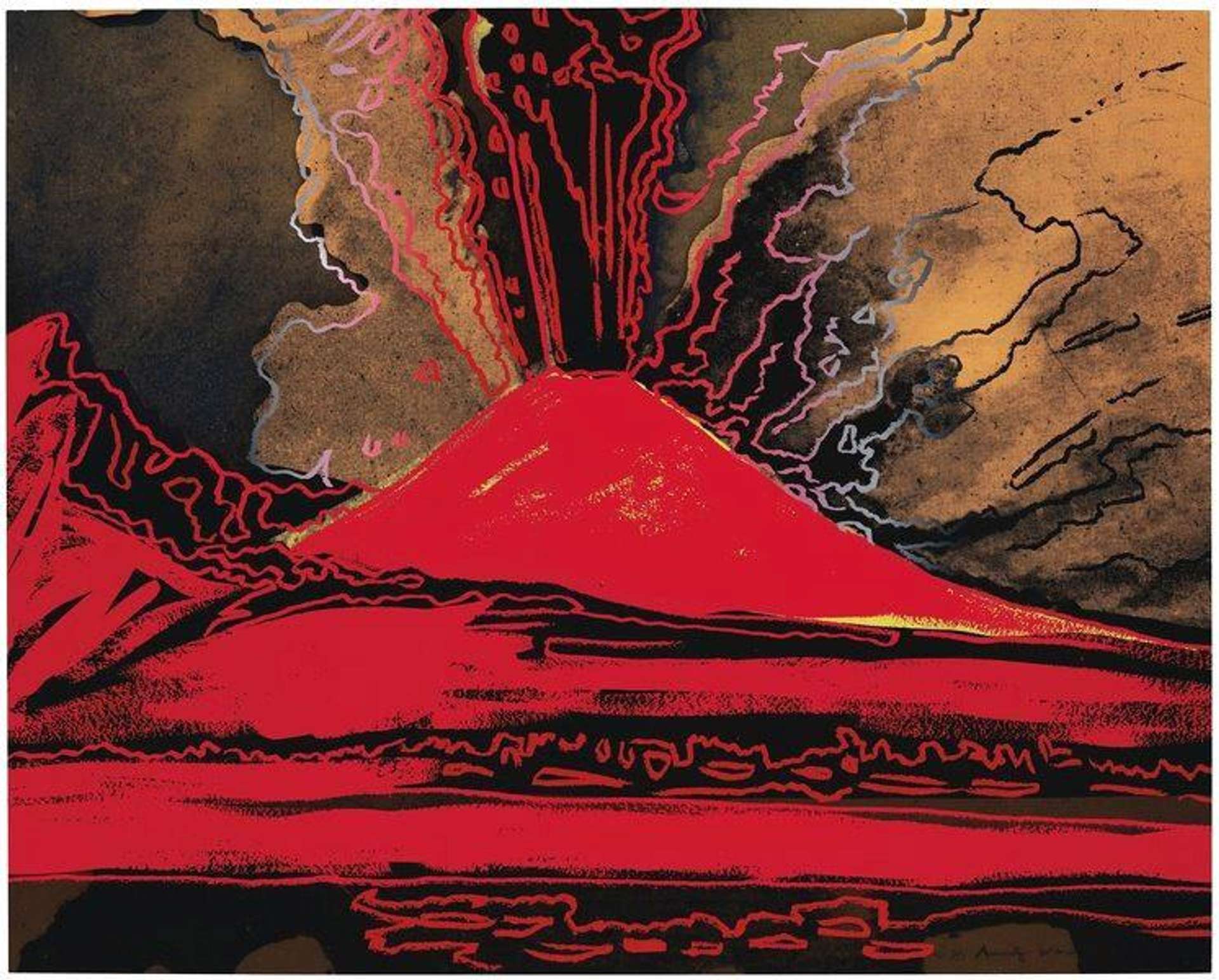
Vesuvius (F. & S. II.365)

Vesuvius (F. & S. II.365)
Signed Print
Andy Warhol
£35,000-£50,000Value
Indicator
$70,000-$100,000 Value Indicator
$60,000-$90,000 Value Indicator
¥320,000-¥460,000 Value Indicator
€40,000-€60,000 Value Indicator
$350,000-$490,000 Value Indicator
¥6,690,000-¥9,550,000 Value Indicator
$45,000-$60,000 Value Indicator
AAGR (5 years) This estimate blends recent public auction records with our own private sale data and network demand.
There aren't enough data points on this work for a comprehensive result. Please speak to a specialist by making an enquiry.
Medium: Screenprint
Edition size: 250
Year: 1985
Size: H 60cm x W 79cm
Signed: Yes
Format: Signed Print
TradingFloor
MyPortfolio
Your collection tracked in real time.
Build your portfolio, manage valuations, view return against your collection and watch works you're looking for.
Track auction value trend
Auction Results
| Auction Date | Auction House | Artwork | Hammer Price | Return to Seller | Buyer Paid |
|---|---|---|---|---|---|
| April 2023 | Phillips New York - United States | Vesuvius (F. & S. II.365) - Signed Print | |||
| October 2022 | Sotheby's New York - United States | Vesuvius (F. & S. II.365) - Signed Print | |||
| November 2020 | Bozner Art Auctions - Italy | Vesuvius (F. & S. II.365) - Signed Print | |||
| April 2019 | Christie's New York - United States | Vesuvius (F. & S. II.365) - Signed Print | |||
| September 2017 | Sotheby's Online - United Kingdom | Vesuvius (F. & S. II.365) - Signed Print | |||
| May 2017 | Artcurial - France | Vesuvius (F. & S. II.365) - Signed Print | |||
| April 2017 | Sotheby's New York - United States | Vesuvius (F. & S. II.365) - Signed Print |
Meaning & Analysis
Completed for a solo exhibition in the esteemed Museo di Capodimonte in Naples, Vesuvius (F. & S. II.365) is a print from Andy Warhol’s Vesuvius Cycle series (1985). The print features an image of the legendary Mount Vesuvius erupting to create an energetic and dynamic composition. On display in a space typically reserved for the old masters and classical landscapes, Warhol reworks the traditional, romanticised Neapolitan imagery of Vesuvius and transforms it into a Pop Art icon.
Produced towards the end of his career, Vesuvius (F. & S. II.365) is characteristic of Warhol’s later prints that extend beyond the established screen printing method and mark a return to hand painting. Warhol applies expressionist brushwork over a flat, screen printed base, using different colours for each print to unfailingly give the impression that the image has just been painted.
Using colour fields of bright red, contrasted against black and multicoloured lines to show the eruption, Warhol creates a powerful image that combines his two most renowned themes: the legacy of art history and the enduring presence of death. Reconsidering the grave display of death in his powerful images of electric chairs, car crashes, and suicides in the early 1960s, Vesuvius (F. & S. II. 365) embodies this sense of impending doom and destruction in a more vivacious and dramatic style. By using an image from the past to create a revitalised Pop Art icon of the present, this print can also be seen in the context of Warhol’s appropriations of art historical subjects like his Mona Lisa (1963) works and Details Of Renaissance Paintings series (1984).